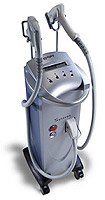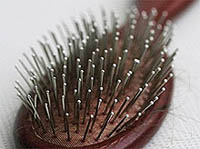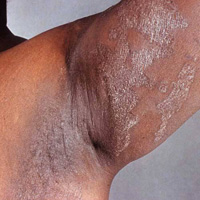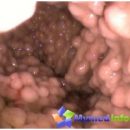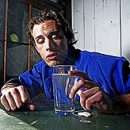The causative agent of streptodermia in children is streptococcal bacteria. Infection occurs at home when contacting patients. In the treatment of streptodermia, children are necessarily insulation of a patient from children's teams. Treatment depends on the prevalence of the process.
Content
The concept of streptodermia in children
Streptodermia called a group of skin diseases, whose causative agents are streptococcal bacteria. The pathogenic activity of microbes is accompanied by the formation on the skin of purulent peeling elements of the rounded form - flicten, the size of which can vary greatly, sometimes reaching several centimeters. They are localized predominantly on face, back and lower limbs. Subsequently, temporary depigmented areas are formed in their place, which differ in color. Occasionally against the background of external symptoms, a small itching appears, dry skin, there is an increase in temperature and an increase in lymph nodes.
Infection occurs as a result of contact with a sick person, that is, in a household. The incubation period (the period from the moment of infection until the first symptoms appear) is about one week. Initially, pink spots appear, hereinafter, for several days, their rebirth occurs in purulent bubbles. Depending on the nature of the lesion of epithelial tissues, the surface and deep form of the disease is distinguished. The first received the name of streptococcal impetigo, and the second - ordinary ectima. In case of impetigo, purulent bubbles are quickly revealed and do not leave after themselves cosmetic defects.
The main symptoms of Extima
Extim affects deep skin layers and is characterized by the formation of large ulcerative elements covered with a dense crust, mainly on the lower limbs. After their healing on the skin there are noticeable scars. For a diffuse type of disease, the defeat of extensive areas of the body surface is characterized, and for interpartiginous - localization of purulent foci in the skin folds. Infection can hit healthy skin or join the already existing inflammatory process. A distinctive feature of streptodermia is that the appendages of the skin - hair and nails are not experiencing the negative impact of pathogenic microflora.
The course of the disease in children is acute or chronic. In the chronic form between recurrences on the spot of purulent bubbles, foci of peeling are formed. The development of the chronic form of the disease contributes to the hypharging or overheating of the limbs, the decrease in total immunity, as a result of which the susceptibility of the skin to infectious agents increases dramatically. It is often happening against the background of diabetes mellitus or other chronic pathologies.
The spread of streptodermia contributes to both the hobby of water treatments and neglect of personal hygiene rules, especially if there are skin microtrams - bites, cuts, combs. A certain role in the development of the disease plays violation of the processes of local blood circulation, imbalance in the skin metabolism. Chronic course of illness contributes to the increase in skin sensitivity to pathogenic microorganisms, as a result of which the patient may develop a heavier skin - eczema.
Methods of treatment of streptodermia
 When signs of the disease, a dermatologist's doctor should immediately visit. It can easily establish pathology, based on the analysis of symptoms - pink spots or peeling purulent elements. Treatment of streptodermia in children must be carried out under the obligatory medical control.
When signs of the disease, a dermatologist's doctor should immediately visit. It can easily establish pathology, based on the analysis of symptoms - pink spots or peeling purulent elements. Treatment of streptodermia in children must be carried out under the obligatory medical control.
An experienced specialist will appoint the most efficient and safe drugs, taking into account the individual characteristics of the child, the possible presence of increased sensitivity or intolerance of certain drugs. In the case of extensive damage to the skin, it is recommended to receive sulfanimamides or antibiotics in the form of tablets, as well as subcutaneous administration of antibacterial drugs. In parallel, especially with the chronic form of the disease, it is necessary to increase the protective forces of the body with the help of special immunomodulators, vitamins, autohemotherapy, physiotherapy (ultraviolet).
With the local distribution of purulent foci, as a rule, there is enough local treatment of streptodermia. It includes the use of special antibacterial and anti-inflammatory funds based on antibiotics, which are sensitive to streptococcal microflora, for example, erythromycin. Purulent bubbles need to operate and impose a disinfecting bandage into this place, after dried up the affected area, the use of antiseptic ointments is shown. This therapeutic course takes about a week, at this time water procedures are contraindicated, a frequent change of linen is necessary, the patient must have individual household items.
If the disease is detected, it is necessary to isolate an infected person, especially this is relevant for children's teams in which close personal contacts - kindergartens and schools take place. Therefore, to prevent the spread of streptococcal infection, its treatment is better carried out under hospital. The forecast is usually favorable, first of all, it concerns the timely started therapy of sharp forms. However, in the chronic course of the disease, against the background of heavy pathologies of internal organs, it may not be as optimistic.
Prevention of streptodermia in children
As the prevention of the disease in children, adherence to the rules of personal hygiene, immediate antiseptic treatment of skin microtrams - abrasion, cuts, bites. An important circumstance is the timely treatment of internal diseases. Attention should be paid to a healthy lifestyle - to eat right and fully, it is more in the fresh air. To strengthen the immunity, it is necessary to regularly conduct challenge procedures, play sports or uncomplicated physical labor.



